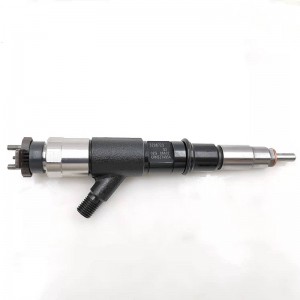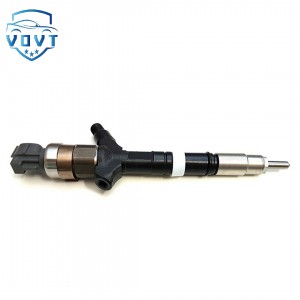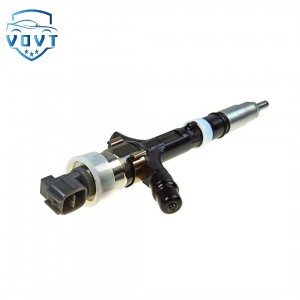High Quality Common Rail Diesel Injector 23670-09070 for Toyota
Products Description
| Reference. Codes | 23670-09070 |
| Application | / |
| MOQ | 4PCS |
| Certification | ISO9001 |
| Place of Origin | China |
| Packaging | Neutral packing |
| Quality Control | 100% tested before shipment |
| Lead time | 7~15 working days |
| Payment | T/T, L/C, Western Union, Money Gram, Paypal, Ali pay, Wechat |
Characterization of rail pressure in high pressure common rail system of automobile engine
In order to improve the performance of high pressure common rail system of automobile engine, the optimization study of rail pressure characteristics is carried out. The influencing factors of rail pressure fluctuation under different working conditions were analyzed by combining numerical simulation and bench test. By optimizing the structural parameters of the injector and the control strategy, the amplitude of rail pressure fluctuation is significantly reduced, and the stability of the system is improved. The results show that the rail pressure fluctuation is reduced by 42.3% and the fuel economy is improved by 3.7% under typical operating conditions. The optimized system shows significant improvement in dynamic response, emission control and plateau adaptability. The study provides theoretical basis and technical support for further optimization of the common rail system.
Mechanism of rail pressure fluctuation
The rail pressure fluctuation in the high-pressure common rail system originates from the coupling of several complex factors [1]. The propagation of pressure wave in the high-pressure pipeline is the main physical mechanism of rail pressure fluctuation. When the high pressure pump delivers fuel to the common rail tube, pressure waves are excited in the tube. These pressure waves propagate back and forth in the pipeline, reflecting and superimposing with the pipeline wall, connectors, etc., forming a complex fluctuation pattern. When the injector is turned on, the pressure in the common rail pipe drops sharply, causing a new pressure wave. At the same time, the periodic fuel supply process of the high-pressure pump also causes pressure pulsations. The mutual interference of these pressure waves leads to continuous fluctuations in rail pressure. The frequency of rail pressure fluctuations is mainly determined by the length of the pipeline, the fuel speed of sound and the operating frequency of the system, usually in the range of a few hundred to a few kilohertz. The fluctuation amplitude is affected by system parameters, working conditions and other factors. Accurately understand the mechanism of rail pressure fluctuation, need to combine fluid dynamics, acoustics and control theory and other multidisciplinary knowledge, the establishment of accurate mathematical models for quantitative analysis.
Influence factor analysis
The influencing factors of rail pressure fluctuation involve system structure, control strategy and working conditions. Among the structural factors, the geometric parameter of high pressure pipeline plays a key role. The length of the pipeline affects the propagation time of the pressure wave, which directly determines the fundamental frequency of the fluctuation. The diameter of the line affects the damping of the system. Smaller diameters increase the friction loss, but at the same time suppress the fluctuations. Common rail tube volume is another important parameter, larger volume can buffer pressure fluctuations, but will reduce the system response speed. The injector structure, especially the nozzle orifice and needle valve quality, also significantly affects the rail pressure dynamics. In terms of control strategy, high-pressure pump supply control, injection timing and injection volume control will affect the rail pressure fluctuations. For example, unreasonable injection timing may lead to pressure wave superposition, exacerbating the fluctuation. Operating conditions such as engine speed, load, etc. also directly affect the rail pressure fluctuation characteristics. Frequent injection at high speeds can exacerbate the fluctuations. Through quantitative analysis of these factors, a prediction model of rail pressure fluctuation can be established to provide a theoretical basis for system optimization.
As a core component of modern diesel engine, the performance of common rail system directly affects the engine's power, economy and emission level. Rail pressure characteristics is an important indicator to evaluate the performance of the common rail system, rail pressure fluctuations will lead to injection instability, affecting the engine work. Therefore, it is of great significance to study the rail pressure characteristics and optimize them. In recent years, scholars at home and abroad have conducted a lot of research on the common rail system, but the optimization of the system for the rail pressure characteristics is still to be in-depth. Based on this, the optimization of rail pressure characteristics of common rail system is discussed in order to provide reference for the improvement of system performance.






















